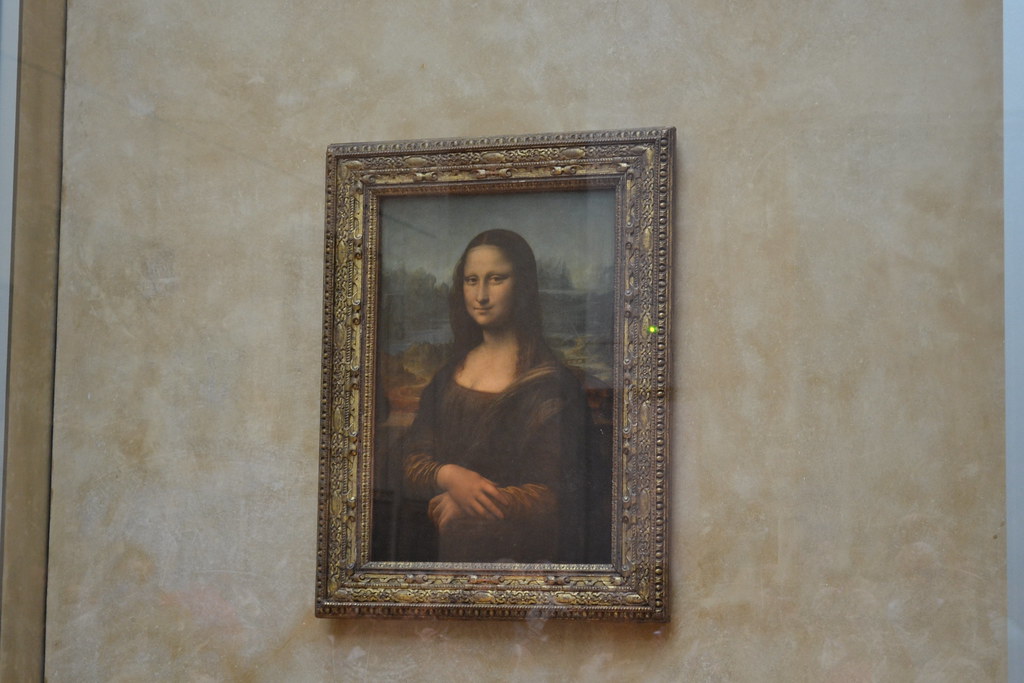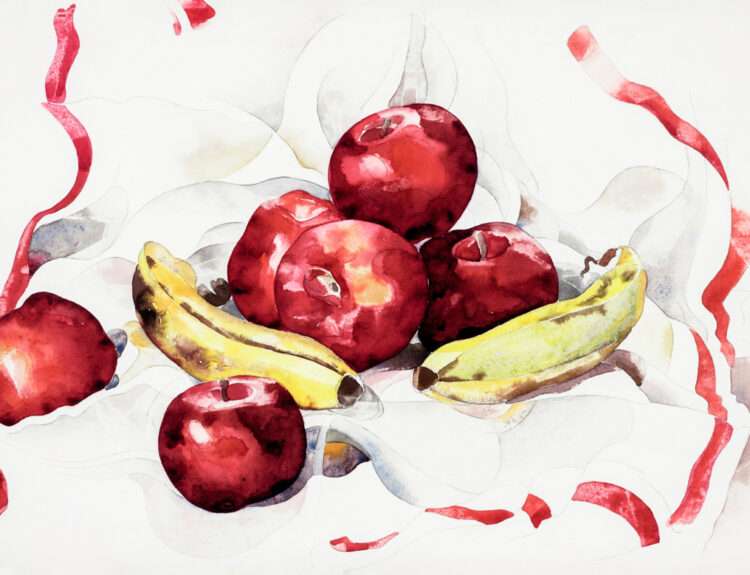Introduction: A Disappointing Masterpiece?
Some visitors to the Louvre feel disappointed when they first see the Mona Lisa. Compared to other grand, dramatic works in the museum, she seems small, quiet, and underwhelming. But if you push past the crowds and take a moment to truly look, you’ll discover why this unassuming portrait is considered the greatest psychological painting ever created—one so ahead of its time that we’re still unraveling its mysteries today.

The Genius Behind the Painting: Leonardo da Vinci
In 1517, French King Francis I invited Leonardo da Vinci to France, offering him a prestigious role as court painter, engineer, and architect. By then in his 60s, Leonardo moved to the Château of Amboise, bringing with him dozens of sketchbooks—and one unfinished painting: the Mona Lisa.
Leonardo knew this was his masterpiece. It was the culmination of his obsessive studies in anatomy, optics, geology, and human emotion. Unlike typical Renaissance portraits—stiff, formal, and symbolic—the Mona Lisa was revolutionary.
How Leonardo Painted Her: The Techniques That Changed Art
1. The Wooden Panel & Lead White Undercoat
Leonardo painted on thin poplar wood, applying a base layer of lead white to reflect light through his translucent glazes. This made the painting glow from within, giving her skin an eerily lifelike radiance.
2. Sfumato: The “Smoky” Blending Technique
Leonardo invented sfumato (meaning “smoky”), a method of blending colors so softly that no harsh lines remain. He applied dozens of ultra-thin layers of oil glaze—some with barely any pigment—to create seamless transitions between light and shadow.
3. Chiaroscuro: The Play of Light & Dark
By contrasting deep shadows with bright highlights (chiaroscuro), Leonardo gave the Mona Lisa a three-dimensional presence, making her seem to emerge from the darkness.
4. The Illusion of Movement
Leonardo skewed the landscape’s horizon line behind her. This subtle trick makes our brains perceive her shoulders as shifting slightly, as if she’s breathing or adjusting her posture.
Why She Looks So Alive: The Science of Her Smile
Leonardo spent nights dissecting cadavers, studying facial muscles to perfect her expression. His anatomical sketches reveal his obsession with how smiles form—how lips curl, how cheeks lift, how eyes subtly change.
The Secret Behind Her Smile
- When you look at her eyes, her smile appears.
- When you look at her mouth, it fades.
- When you look away, the smile lingers in your mind.
Harvard neuroscientist Dr. Margaret Livingstone discovered this effect is due to human vision:
- Our central vision (fovea) sees fine details (like her lips).
- Our peripheral vision picks up shadows and motion (like her cheekbones).
Leonardo knew this 500 years ago—he painted her smile to play with our perception, making her feel alive.
The 1911 Heist: How a Theft Made Her Famous
Before 1911, the Mona Lisa was just another Renaissance portrait. But on August 21st, handyman Vincenzo Peruggia hid in the Louvre overnight, stole her in the morning, and walked out undetected.
Why Did He Do It?
Peruggia, an Italian patriot, wrongly believed Napoleon had stolen the painting from Italy. He wanted to “return” it to its homeland.
The Aftermath
- The theft made global headlines, turning the Mona Lisa into a household name.
- She was missing for two years before Peruggia tried selling her to an Italian art dealer—and got caught.
- When she returned to the Louvre in 1914, she was no longer just a painting—she was a legend.
Conclusion: More Than a Painting—A Living Mystery
The Mona Lisa isn’t just pigment on wood. She’s a psychological masterpiece, a scientific experiment, and a cultural icon. Leonardo didn’t just paint a woman—he captured humanity itself.
Want to see her? Visit the Louvre—but don’t expect to be alone. Over 10 million people visit her every year, proving that 500 years later, we still can’t look away.
FAQs: Mona Lisa
Who is Mona Lisa?
Lisa Gherardini, wife of Florentine merchant Francesco del Giocondo. Painted by Leonardo da Vinci between 1503-1519.
Who painted the Mona Lisa?
Leonardo da Vinci, Italian Renaissance polymath (painter, scientist, inventor).
When was the Mona Lisa painted?
Started 1503 in Florence; carried to France in 1516 where da Vinci refined it until his death (1519).
How much is the Mona Lisa worth?
Priceless (officially), but insured for **100million+∗∗in1962( 100million+∗∗in1962( 1 billion today).
How did da Vinci create her mood?
- Sfumato: Smoke-like blending of colors
- Chiaroscuro: Dramatic light/shadow contrast
- Aerial perspective: Blurred background
- Peripheral vision tricks: Smile “appears” when viewed indirectly
Who stole the Mona Lisa?
Vincenzo Peruggia (1911), a Louvre employee who hid it in his apartment for 2 years.
Why is she famous?
- Revolutionary techniques
- Mysterious expression
- 1911 theft scandal
- Da Vinci’s unfinished perfection
If you found this helpful, explore our [ultimate guide to breaking sleep paralysis fast].










